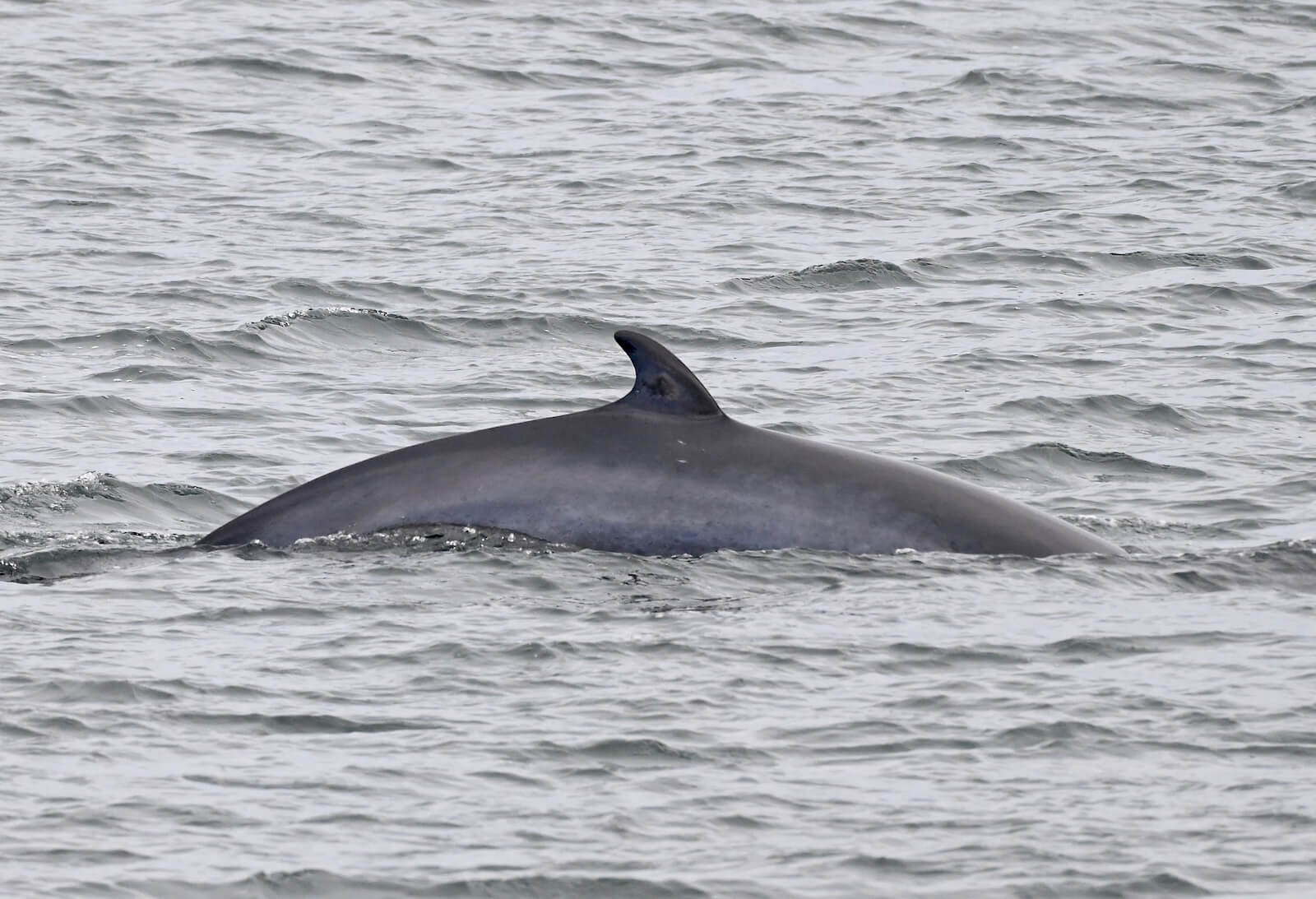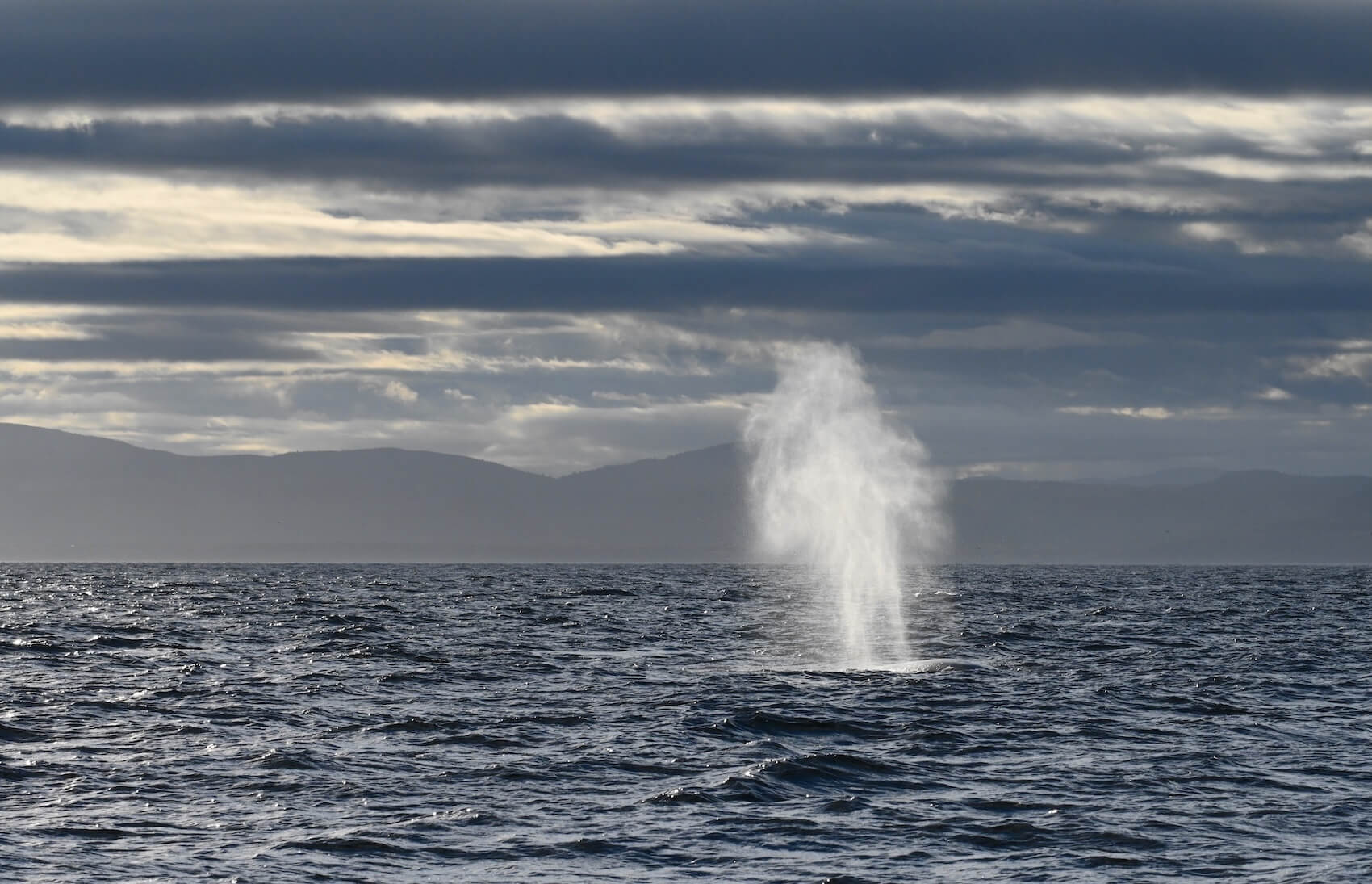Week after week, the same pattern has been emerging throughout the St. Lawrence. Rorquals are very much present, sometimes observed surface feeding, other times breaching, generally moving from one point to another in search of food.
The Mingan Island Cetacean Study (MICS) is in the field in the Mingan Archipelago region and was recently able to observe approximately twenty minke whales, almost ten fin whales and as many humpbacks. In addition to these large rorquals, two North Atlantic right whales were seen on July 7 in Jacques Cartier Strait (between Anticosti Island and the North Shore). This is the second sighting this year for this species in the St. Lawrence. Researchers from Fisheries and Oceans Canada had spotted four in the Shediac Valley during an offshore mission in June. This area, located east of New Brunswick and northwest of Prince Edward Island, is also a site of interest that is currently being re-evaluated as part of the development of a marine protected area network. This valley is known for its high productivity due to circular currents near its northern and southern boundaries.

Researchers are attempting to understand the migrations of this endangered species. Indeed, aerial observations have confirmed in recent years that many whales are now found in the Gulf of St. Lawrence, whereas in the past, researchers used to make a hundred or so observations per year in the Bay of Fundy. For the past four or five years, sightings have been falling rapidly; in the summer of 2015, only a ten or so of these whales have been seen in the bay. As part of the endangered species program, researchers at the Maurice Lamontagne Institute in Mont-Joli have developed a project to unravel the mystery behind its return to the Gulf of St. Lawrence. Notably, instruments have been installed there to measure food abundance and currents. The right whale is very selective; it feeds exclusively on zooplankton and copepods, unlike other whales that also prey on small fish. Researchers suspect that the presence of right whales in the Gulf of St. Lawrence is related to favourable currents that are causing their favourite prey to accumulate in dense concentrations at specific sites during certain periods.
Fisheries and Oceans Canada’s next offshore and aerial missions will be conducted in August and September.





